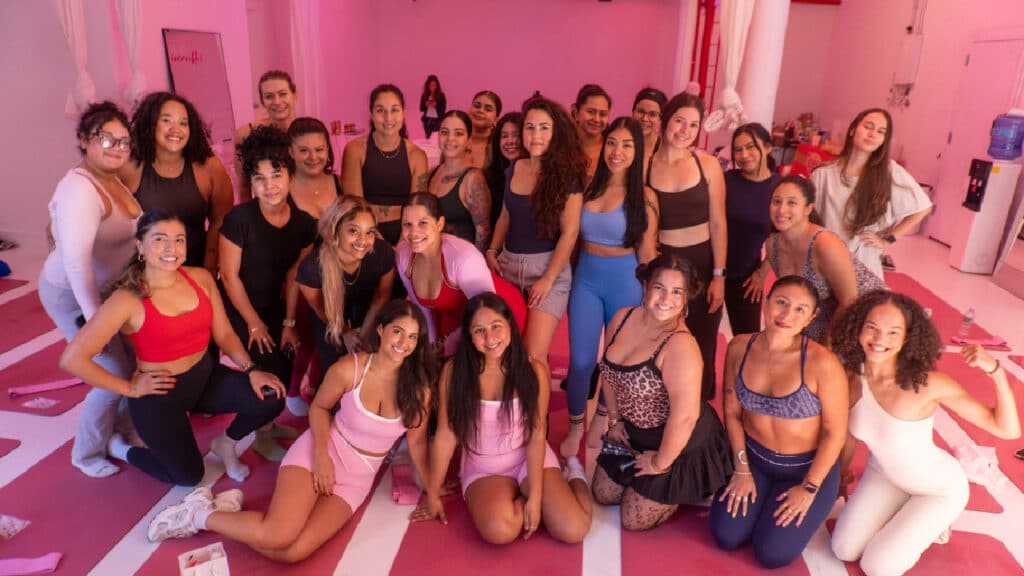This Mexican-American Hairstylist’s Cancer Diagnosis Is Exposing the Ugly Truth About Hair Dye
For over 40 years, Hector Corvera built his career behind the chair. The Central Valley native, born to Mexican-American agricultural farmers, chose hairstyling as a way to escape the backbreaking labor of the fields. Cutting hair seemed like a safer, more sustainable career—until a 2023 diagnosis changed everything.
After receiving his diagnosis of bladder cancer, Corvera’s doctor asked him a question that still haunts him: “What do you do for a living?”
When Corvera responded that he was a hairdresser, the doctor replied, “Hmm, that explains it.”
At the time, Corvera was too overwhelmed to press for details. But soon after, a law firm investigating hairstylists with similar diagnoses reached out. That led him down a path of research—one that connected his daily exposure to hair dye chemicals with cancer risks long documented by scientists.
Now, Corvera is suing L’Oréal and 10 other beauty companies, claiming that known carcinogens in hair dyes caused his cancer.
The Hair Dye Industry Knew. So Why Are These Chemicals Still in Use?
Corvera’s lawsuit, filed in Los Angeles last month, alleges that major beauty brands acted negligently by selling dangerous, defective hair dyes without proper warnings. According to NBC News, his lawyer Allen Smith argues that Corvera’s cancer was “a direct and proximate result” of years of exposure to toxic chemicals in hair color products.
Smith, who previously took on Johnson & Johnson over the talcum powder cancer lawsuits, is now setting his sights on the hair care industry. And Corvera isn’t the only client. Smith told NBC News that he represents multiple hairstylists diagnosed with bladder cancer after years of handling hair dyes.
“We’re not talking about chemicals in hair dyes that might be carcinogenic or possibly carcinogenic,” Smith said. “These are known chemicals that cause cancer.”
The lawsuit lists some of the biggest names in hair care, including L’Oréal, Clairol, and Wella. These are brands millions trust, but studies suggest their products may contain dangerous levels of carcinogens, particularly aromatic amines like 4-aminobiphenyl (4-ABP)—a chemical linked to bladder and liver cancer.
Scientists Have Been Warning About Hair Dye Chemicals for Decades
Concerns about hair dye aren’t new. Researchers have been questioning their potential cancer risks since the 1970s.
A 1975 study tested around 170 permanent hair dyes and found that the majority altered bacterial DNA, raising red flags about their carcinogenic potential. Around the same time, National Cancer Institute screenings on hair dye ingredients revealed that a common ingredient caused cancer in lab animals.
In response, some companies reformulated their products to remove certain harmful chemicals, according to the FDA. But that didn’t mean they got rid of all carcinogens.
A 2003 study by the National Center for Toxicological Research found that 8 out of 11 commercial hair dyes still contained 4-ABP. The chemical showed up in black, red, and blonde dyes—but not in brown dyes.
Fast forward 20 years, and scientists are still finding undisclosed toxic ingredients in modern hair color products.
Dr. Adana Llanos, an epidemiologist at Columbia University, told NBC News that these harmful chemicals aren’t even on labels. Instead, they appear during manufacturing or when hair dye is mixed with hydrogen peroxide and color accelerants in the salon.
“How is it that 4-ABP is still being found in modern-day hair dye?” Llanos questioned. “That chemical, in particular, should not be in products people have easy access to because we know it’s harmful and toxic.”
Hairdressers Have a Higher Cancer Risk—And the WHO Agrees
Scientists have long suspected that hairdressers face an elevated risk of bladder cancer due to prolonged exposure to aromatic amines and other carcinogens in hair dye.
A 2010 analysis of 42 studies published by German researchers confirmed an increased and statistically significant risk of bladder cancer among hairdressers. The longer someone worked as a hairstylist, the greater the risk.
The World Health Organization (WHO) later weighed in, classifying the hairdressing profession as “probably carcinogenic to humans.” This designation is based on consistent evidence linking hairstylists and barbers to an excess risk of bladder cancer.
But despite these findings, hair dye remains largely unregulated in the U.S.
“The FDA Doesn’t Approve Hair Dyes Before They Hit the Market”
Unlike pharmaceuticals, cosmetic products don’t require pre-market approval from the FDA. That means beauty brands don’t need to prove their hair dyes are safe before selling them to the public.
NBC News reached out to the FDA for comment. The agency confirmed that it does not regulate most cosmetic ingredients and that hair dye companies are not required to inform them if they remove harmful chemicals from their formulas.
Attorney Allen Smith argues that companies like L’Oréal misled the FDA for decades, claiming to have removed toxic chemicals from their products when, in reality, they remain in use today.
“Cosmetics undergo no FDA testing before they go on the market,” Smith told NBC News. “So the guinea pigs are the people who use or wear these products.”
Should People Who Dye Their Hair Be Worried? Scientists Say It’s Complicated
While hairstylists face the highest exposure levels, there’s also growing concern for regular consumers who dye their hair frequently.
A 2020 NIH-funded study analyzed data from 47,000 women and found a 9% increased risk of breast cancer among those who used permanent hair dye regularly. For Black women, the risk skyrocketed to 60%.
Dr. Tiffany Onger, an oncologist at Cleveland Clinic, said the findings “raise eyebrows”, particularly because darker hair dyes require higher concentrations of chemicals.
“We know that Black women tend to use darker dyes to cover grays,” Onger explained. “But it’s actually these darker dyes that are more problematic.”
However, not all studies agree. A 2020 BMJ study found no strong association between hair dye use and most cancers, though it did note slightly higher risks for some types of breast and ovarian cancer.
The Fight for Transparency: “Consumers Deserve to Know”
For Hector Corvera, the goal isn’t just legal victory—it’s accountability.
“I think they need to be clear and honest with the consumer and tell them what’s in the product,” he told NBC News.
His lawsuit is part of a growing movement calling for transparency in the beauty industry. With hairstylists and scientists speaking out, the pressure on cosmetic giants to reformulate their products is only mounting.
Until then, many are left asking: If these chemicals are known carcinogens, why are we still using them?




